Potřebujeme váš souhlas k využití jednotlivých dat, aby se vám mimo jiné mohly ukazovat informace týkající se vašich zájmů. Souhlas udělíte kliknutím na tlačítko „OK“.
ASTM D4703-10a
Standard Practice for Compression Molding Thermoplastic Materials into Test Specimens, Plaques, or Sheets (Includes all amendments And changes 4/8/2016).
Automaticky přeložený název:
Standardní praxe pro lisování termoplastů do zkušebních vzorků, plakety, nebo listy
NORMA vydána dne 1.11.2010
Informace o normě:
Označení normy: ASTM D4703-10a
Poznámka: NEPLATNÁ
Datum vydání normy: 1.11.2010
Kód zboží: NS-28229
Počet stran: 12
Přibližná hmotnost: 36 g (0.08 liber)
Země: Americká technická norma
Kategorie: Technické normy ASTM
Kategorie - podobné normy:
Anotace textu normy ASTM D4703-10a :
Keywords:
injection-molding, mold design, test specimen preparation, thermoplastics, Molding/extrusion compounds/materials, PET (poly(ethylene terephthalate)), PMMA (poly(methyl methacrylate)), Polyalkylene terephthalates, Polyamide (PA), Polycarbonate (PC), Acetal plastics, Injection molding/extrusion compounds, Polypropylene (PP), Reciprocating screw injection molding machines, Thermoplastic elastomers (TPE), Thermoplastics, ICS Number Code 83.080.20 (Thermoplastic materials)
Doplňující informace
| Significance and Use | ||||||||||
|
The methods by which sample materials are prepared and molded influence the mechanical properties of the specimen. Unlike injection molding, the objective of compression molding is to produce test specimens or sheets that are both homogeneous and isotropic. Molded specimens may be made from powder or pellets such as are received directly from a material manufacturer, particles produced in a recycle recovery operation, or from a milled preform or sheet prepared on a two-roll mill. The powder, pellets, particles, preform, or sheet are melted and molded in a mold designed to produce a finished specimen of a given geometry, size, and thickness, or melted and molded in the form of a smooth plaque or sheet of uniform thickness from which desired specimens are cut, punched, or machined. Working a compound on a two-roll mill prior to molding will disperse and distribute the compound additives in a manner that will affect the physical properties of the compound. The need for milling a sample prior to compression molding may be determined by reference to the relevant material specification or the material manufacturer. It is important to treat different samples of the same type of material in the same way: if milling was done prior to molding on a material which is to be used as a standard for comparison, all new materials to be tested against this practice should be prepared and molded in a similar manner. The apparatus and exact conditions required to prepare adequate specimens may vary for each plastic material. Apparatus and procedures which should be satisfactory for molding many different plastic materials are given in this practice in Sections 5 and 6. The apparatus and procedures which have been found satisfactory for molding certain specific materials are given in the Appendix. In any case, the apparatus and procedures to be used in producing compression-molded specimens of a given material may be obtained by reference to the relevant material specification and should be agreed upon between the purchaser and the supplier. |
||||||||||
| 1. Scope | ||||||||||
|
1.1 This practice covers the general principles to be followed when injection molding test specimens of thermoplastic molding and extrusion materials. This practice is to be used to obtain uniformity in methods of describing the various steps of the injection molding process and to set up uniform methods of reporting these conditions. The exact conditions required to prepare suitable specimens will vary for each plastic material. Those conditions shall become a part of the specification for the material, or be agreed upon between the purchaser and the supplier. Any requirements or recommendations in the material specification which differ from this standard take precedence over those in this standard. 1.2 The methodology presented assumes the use of reciprocating screw injection molding machines. 1.3 The values stated in SI units are to be regarded as the standard. The values given in parentheses are for information only. 1.4 This standard does not purport to address all of the safety concerns, if any, associated with its use. It is the responsibility of the user of this standard to establish appropriate safety and health practices and determine the applicability of regulatory limitations prior to use. Note 1—This practice is equivalent to the following parts of ISO 294: PlasticsInjection Moulding of Test Specimens of Thermoplastic Materials; 294-1: Part 1General Principles and Multipurpose Test Specimens (ISO Type A Mould) and Bars (ISO Type B Mould); ISO 294-2: Part 2Small Tensile Bars (ISO Type C Mould); ISO 294-3: Part 3Plates (ISO Type D Moulds). |
||||||||||
| 2. Referenced Documents | ||||||||||
|
Podobné normy:
Historická
1.6.2013
Historická
1.6.2011
Historická
1.1.2010
Historická
1.5.2014
Historická
15.11.2010
Historická
1.3.2014
Odebírejte informace o nově vydaných normách ZDARMA:
Chcete pravidelně odebírat informace o nově vycházejících normách z celého světa a to zcela zdarma?
Přihlašte se k odběru. Vše je velice jednoduché a absolutně ZDARMA.
Na výběr máte vydavatele z celého světa.



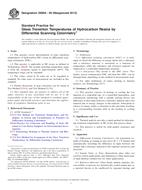 ASTM D6604-00(2013)..
ASTM D6604-00(2013)..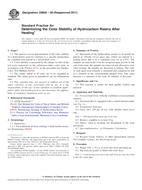 ASTM D6605-06(2011)..
ASTM D6605-06(2011)..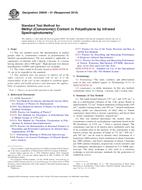 ASTM D6645-01(2010)..
ASTM D6645-01(2010).. ASTM D6713-14
ASTM D6713-14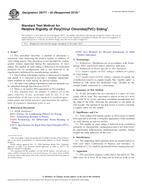 ASTM D6777-02(2010)e..
ASTM D6777-02(2010)e..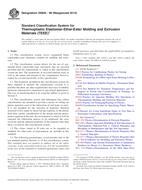 ASTM D6835-08(2014)..
ASTM D6835-08(2014)..
 Cookies
Cookies
